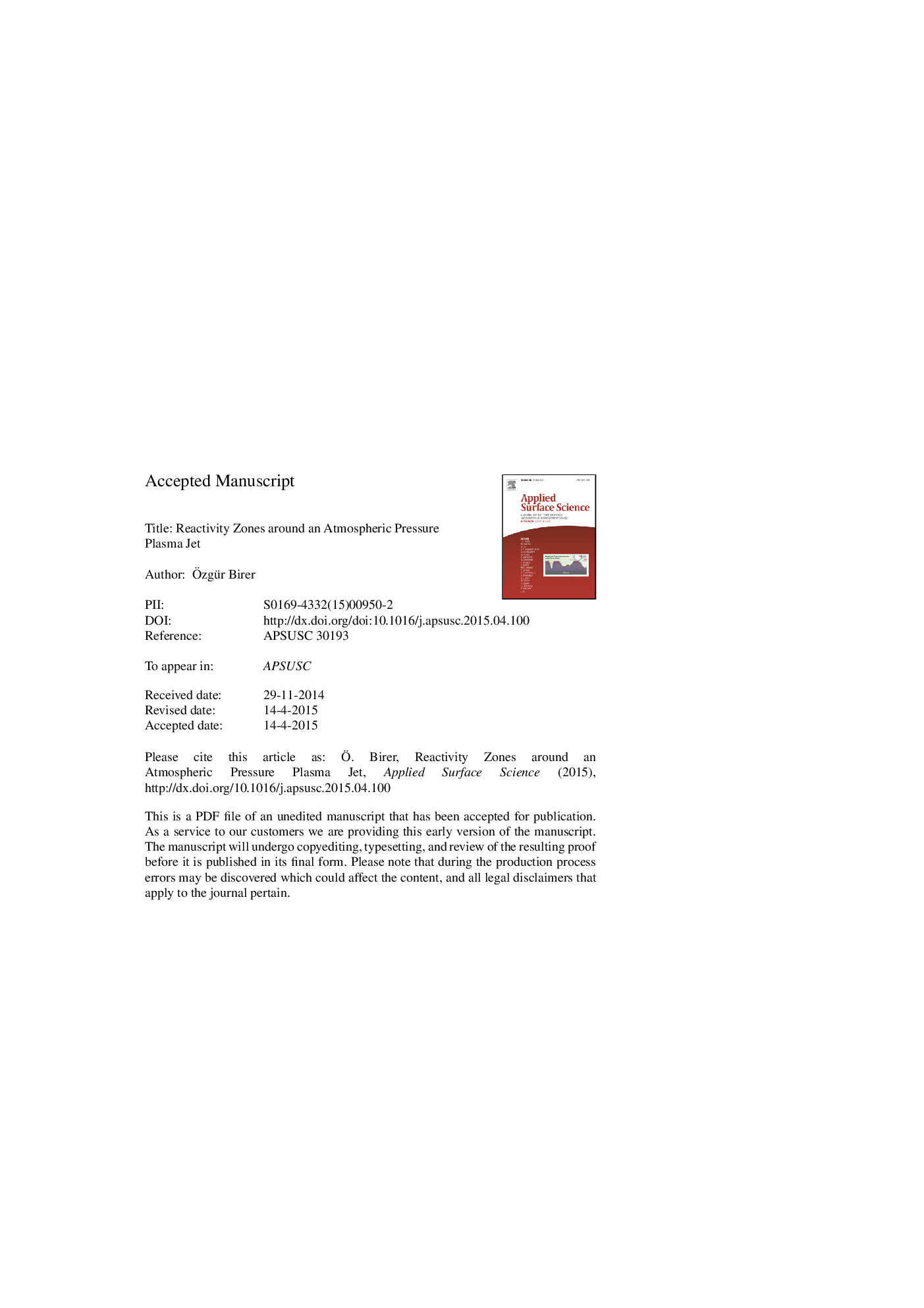| Article ID | Journal | Published Year | Pages | File Type |
|---|---|---|---|---|
| 5349122 | Applied Surface Science | 2015 | 25 Pages |
Abstract
The reactivity zones around an atmospheric pressure plasma jet are revealed by XPS mapping of chemical moieties on a polyethylene surface treated with a 3-mm plasma jet. The area directly hit by the helium plasma jet initially oxidizes and later etches away as the plasma treatment continues. The oxidation initially starts at the center and expands outwards as a ring pattern with different spatial potency. At the end of 10Â min plasma jet treatment, distinct ring patterns for -NO, -COO, -CO and -NO3 species can be detected with respectively increasing diameters. The plasma jet can cause chemical changes at locations several millimeters away from the center. The spatial distribution of oxidized species suggests presence of chemical reactivity zones. Introduction of nitrogen into the helium plasma jet, not only increases the type of nitrogen moieties, but enriches the reactivity zones by generating nitrogen molecular ions within the plasma jet. The complex competing reaction mechanisms among the radicals, ions, metastable atoms and UV photons lead to unusual etching patterns on the surfaces.
Related Topics
Physical Sciences and Engineering
Chemistry
Physical and Theoretical Chemistry
Authors
Ãzgür Birer,
